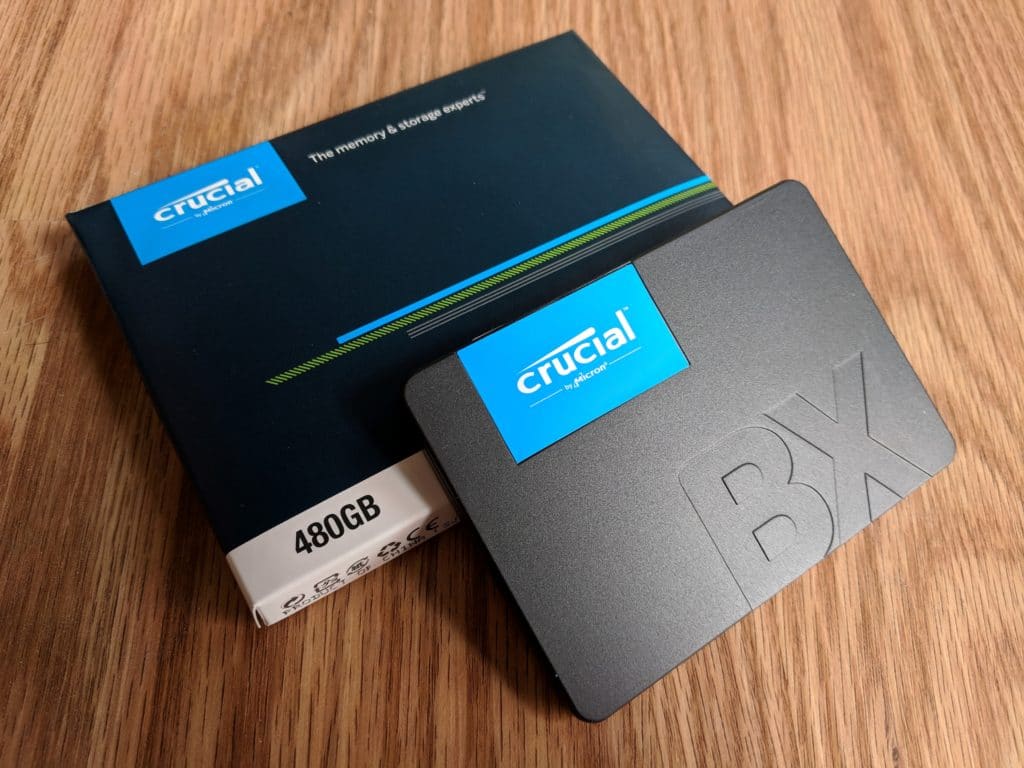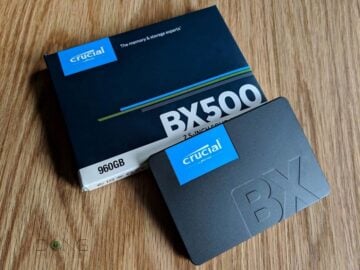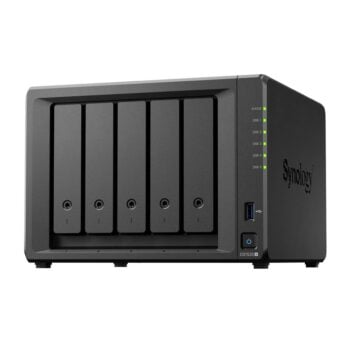This post includes the best SATA SSDs I’ve reviewed or used in over a decade and a half. You can get any of them, and rest assured, they will do the job much better than a hard drive of the same capacity.
As SATA SSDs, they can work in any place where you currently use a hard drive. For much faster SSD options, check this list of top-five NVMe SSDs instead.
Dong’s note: I first published this post on May 1, 2020, and last updated it on March 24, 2025. Originally, this list included SSDs of all types. On April 15, 2025, the NVMe portion was moved to a separate list.

Best SATA SSDs: The list
This list is sorted in recommendation order, with the best on top—the numbers are the ranking. However, their performances are relatively similar in real-world usage.
Tip
NVMe and SATA are two distinctive internal storage types, with the latter replacing mechanical hard drives. With the SATA 3 standard as the bottleneck, SATA SSDs’ performance is capped at only 6Gbps, with real-world performance maxed out at around 550MB/s. Still, they are much faster than any platter-based storage device.
Top 5 best SATA SSDs
 |  |  |  |  | |
| Name | Samsung 870 EVO’s Rating | WD Red SA500’s Rating | WD Blue’s Rating | Crucial BX500’s Rating | SanDisk SSD Plus’ Rating |
| Price | – | – | – | – | – |
| Rating | |||||
| Description | |||||
| Statistics | |||||
| Buy this product |
1. Samsung SSD 870 EVO

The 870 EVO is Samsung’s latest SATA SSD and might be the company’s last drive of the standard.
Similar alternatives from Samsung:
- Samsung 870 QVO
- Samsung 860 EVO
- Samsung 860 QVO
- Shopping link: Compare these Samsung drives on Amazon!
Samsung 870 EVO's Rating

Pros
Top-notch SATA performance
Useful software with an excellent feature set
Relatively affordable
5-year warranty
High endurance
Cons
No 8TB capacity
2. WD Red SA500

The WD RED SA500 is unique since it’s available in M.2 and SATA form factors. It’s an excellent choice for a NAS server or a budget PC.
WD Red SA500's Rating

Pros
Affordable with extended warranty
Excellent performance
2.5-inch and M.2 form factors
High capacity
Cons
Relatively low endurance when compared to competing drive
No NVMe version, 2.5-inch to 3.5-inch mounting bracket not included
3. Western Digital WD Blue

First available in 2016, the WD Blue has gone through a few hardware revisions. The latest model, WD Blue SA510, is available for 250GB and up to 4TB. Over the years, the drive has proven itself to be an excellent SSD. It’s worth noting that this is the last SATA SSD made with the WD brand, considering Western Digital officially split off the NAND business to SanDisk in February 2025.
WD Blue's Rating

Pros
Excellent performance
Up to 4TB of storage, affordable; helpful bundled software
High endurance, reliable
Cons
A bit pricey
4. Micron Crucial BX500

The Crucial BX500 is a barebone SSD with relatively modest performance, but thanks to the friendly cost, it’s still an excellent alternative to any hard drive.
Alternative:
Crucial BX500's Rating

Pros
Inexpensive
Good performance and endurance
Useful software and features
Cons
No encryption, bare-bone specs
The performance could use some improvement
5. SanDisk SSD Plus

First available one year after the WD Blue above, the SanDisk SSD Plus has been an excellent drive for those needing a good combo of fast SATA performance, reasonable cost, and excellent reliability.
SanDisk SSD Plus' Rating

Pros
Good performance
Up to 2TB of storage; excellent dashboard software
High endurance and reliable
Cons
Inconsistent performance between hardware versions
Best SATA SSDs: The takeaway
The SATA standard is much slower than the NVMe counterparts, but still significantly faster than any traditional hard drive. Additionally, since SATA SSDs fit in the place of any regular HDD, they are excellent replacement storage devices. On a fast, NVMe-based computer, a SATA SSD also makes an excellent secondary drive for data or backups. If you’re in such situations, any of the above will get the job done.



why do you compare crucial BX500 with WD blue, WD red, and Samsung Evo??? if your really have experience and knowledge, you know it should be MX500.
I guess I don’t have either. But the BX basically replaces the MX series, which has long been discontinued. These are the drives you can actually buy at the time of publication.
Yes, it has been discontinued but is not a equivalent replacement, MX500 has much better performance and endurance than BX500… anyways thanks for your reviews
What is your favorite 4tb m.2 for use in a ubiquiti cloud gateway fiber?
I don’t have a favorite, John. I just grabbed one in my pile of my reviewed drives. The one I used is the Rocket 4 Plus. I think any drive will do since NVMe is way more than fast enough for the need (SATA hard drives are already fast enough.) But you don’t want to use PCIe 5 SSDs since they run super hot, as mentioned.
The Intel 905P is pretty amazing for an OS drive. Everything is extremely snappy and responsive.
It’s an old and expensive pre-M.2 SSD and not as fast as the current ones. But yes, it was quite impressive at its time and still fast today.
FWIW, Amazon sells a Crucial BX500 2TB 3D NAND SATA 2.5-Inch Internal SSD, up to 540MB/s – CT2000BX500SSD1, Solid State Hard Drive for $115. So there is a larger Crucial SSD.
👍
I am surprised there was no mention or inclusion of a single Sabrent-branded SSDs. I’ve been using a couple 2TBs for well over a year and no problems. I have an unopened 2TB NVMe v4.0 ready to deploy when I get my Lenovo X1 Extreme Gen 4. You might want to check them out. Here’s one link to a Black Friday special at Amazon.
https://www.amazon.com/dp/B07TLYWMY
Hi Dong,
My daughter has a ThinkPad X1 Carbon laptop. About a year ago, I upgraded its SSD from Intel Pro 6000p 256GB (SSDPEKKF256G7) to Samsung 970 EVO Plus 1TB (MZ-V7S1T0B/AM).
We found out that the 970 EVO Plus runs quite a bit hotter than the Intel Pro 6000p.
I think it might be useful to your readers, if you could include some temperature measurements, especially in ultra-portable laptops.
Thank you and Happy Thanksgiving!
When you need larger capacity drives, there is no competition for old mechanical hard drives. I would rather pay $200 for a 10TB mechanical drive than $1000+ for a SSD. Put 8 of them into a Synology DS1819+ and you really have a lot of $ put out in drives.
That’s true, Steve. These mostly are for the boot drive of a computer. You can use SSDs with a NAS though, you’ll be amazed how much faster your system is especially when you want to run VMs. More in this review of the DS1621+.
I know. I have an Alienware m17 r3 with 2x 2tb m.2 NVMe SSDs, and 1x 512GB m.2 NVMe SSD. On the 1819+. I have 8x 10tb HD (shucked WD EasyShares) and 2 Seagate Iron Wolf drives for caching
I’m impressed, Steve! On the shucked ones! It takes guts. 🙂
Not really. They are white label HGST drives. Most of the Seagate 10TB or larger are now IronWolf drives now. You have access to my email so if you want to email me, feel free.
Noted, Steve. Thanks. 🙂
Maybe this is insensitive (or plain ole back woods ignorance), but are spindle/platter drives still common in everyday computing? I purchase computers semi-regularly (I work in IT) and don’t think you can configure devices with anything but SSD for the primary (the Dell models we buy anyway).
I can’t even begin to fathom how long it must take for Windows 10 to do anything on a 7200RPM (or even 5400RPM, ouch!) drive.
There are still a lot of new (cheap) computers that use HDD on the inside, Lance. Not to mention existing old computers. But SSDs are taking over for sure. And you can also upgrade to a larger one.
consider ADATA XPG SX8100 512GB 3D NAND NVMe Gen3x4 PCIe M.2 2280 Solid State Drive R/W 3500/3000MB/s SSD (ASX8100NP-512GT-C)
I’ll check it out, Ron. Thanks for your suggestion.
Why no SanDisk SSD? Great budget SSD and good performance options. I have two 960GB Ultra IIs that are going strong 4-5 years now.
They haven’t made new ones for a long time, WP. The one you mentioned I reviewed in my past life at CNET, not on this site.
Please include WD SN850 NVMe Gen 4.0 drives as it narrowly beats Samsung 980 Pro while being little cheaper. It is also NVMe 1.4.
Noted, D. I’ll see to it. 🙂